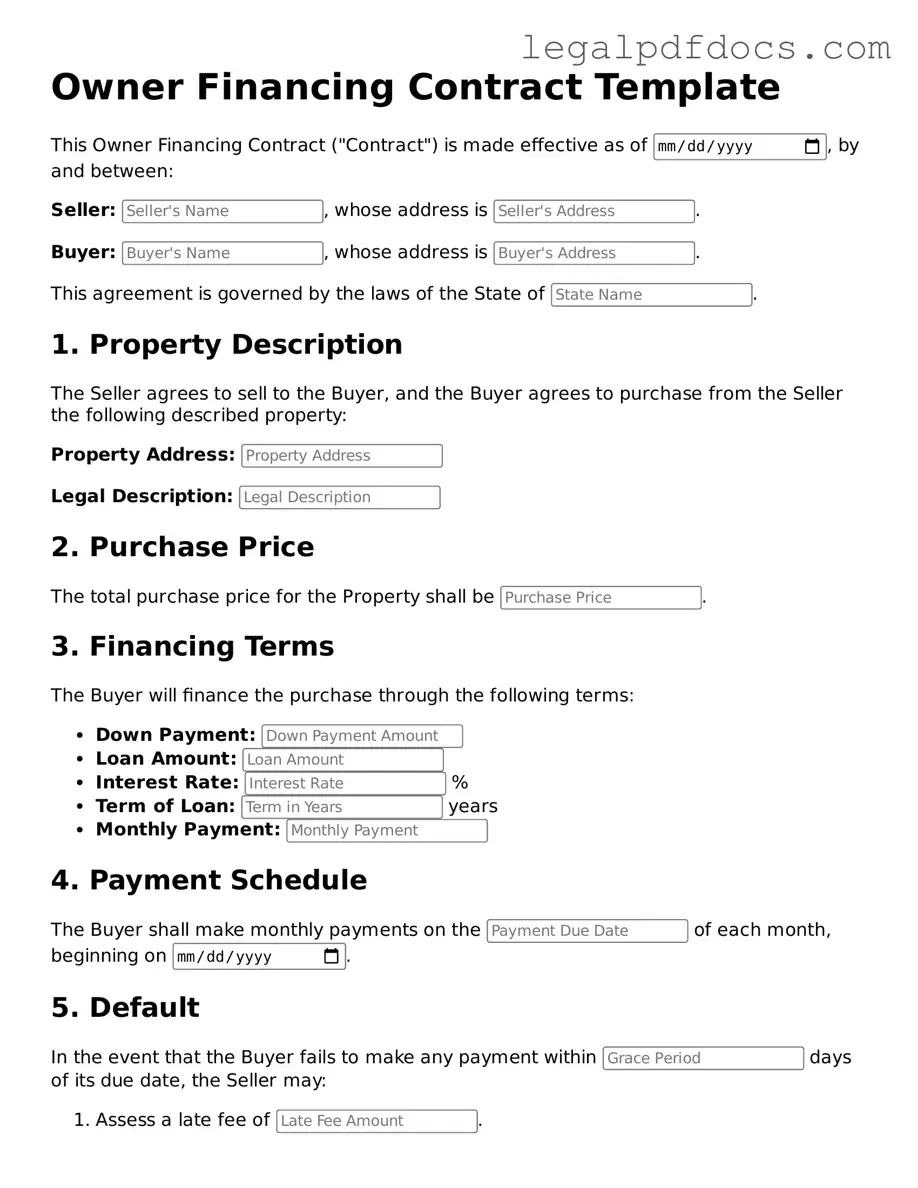Owner financing can be an attractive option for both buyers and sellers in real estate transactions, allowing for a more flexible approach to financing a property. This arrangement often involves the seller acting as the lender, which can streamline the buying process for individuals who may face challenges securing traditional financing. The Owner Financing Contract form serves as a critical document in this scenario, outlining the terms and conditions of the financing agreement. Key elements typically included in the form are the purchase price, down payment amount, interest rate, repayment schedule, and any specific conditions or contingencies that may apply. Additionally, it addresses the responsibilities of both parties, such as maintenance of the property and insurance requirements. By clearly defining these aspects, the Owner Financing Contract helps to protect the interests of both the buyer and seller, ensuring a smoother transaction and reducing the potential for disputes down the line. Understanding this form is essential for anyone considering owner financing, as it lays the groundwork for a successful and mutually beneficial agreement.
